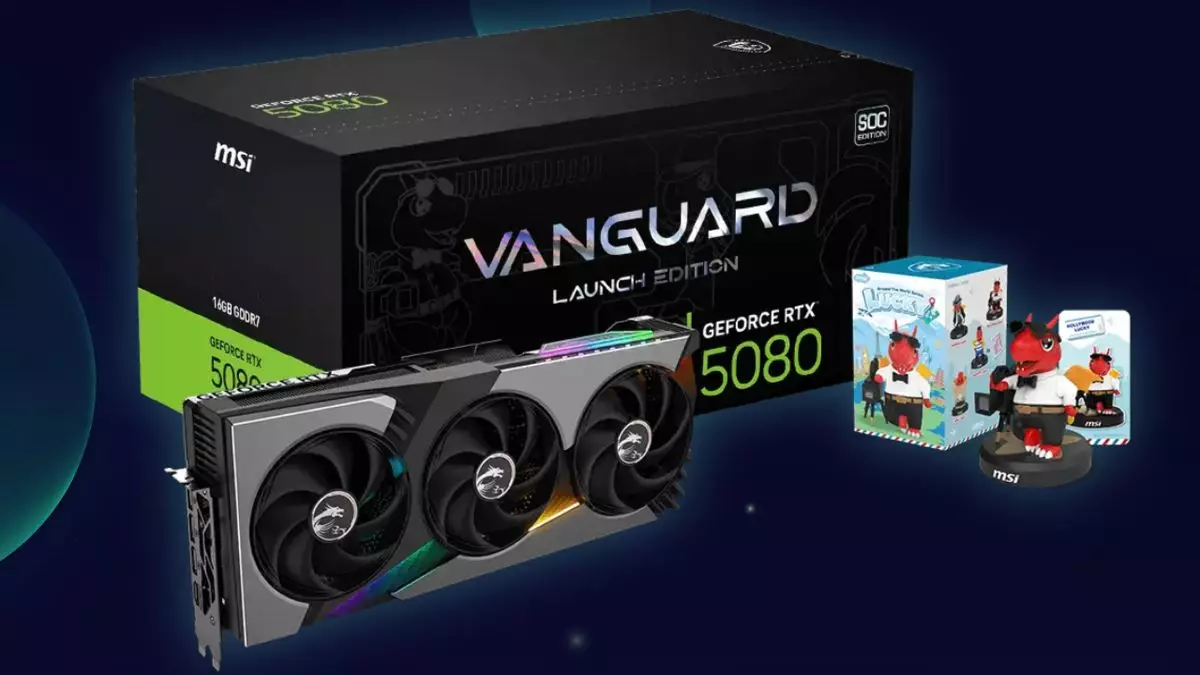Reflecting on my childhood, I remember the innocent fantasies surrounding collectibles. My father collected Natwest pigs, believing that these whimsical figures might one day render enough value to cover my first rent payment. Spoiler alert: they didn’t. Fast forward to the contemporary tech landscape, we find MSI launching a similar paradigm of hope, albeit a more lucrative one. Their promotion encourages enthusiasts in Taiwan to gather nine Lucky Dragon figurines in exchange for a coveted RTX 5080 graphics card at Taiwan Original Price House. While it sounds enticing, there’s an uncanny twist to the story that I find both fascinating and frustrating.
The Cost of Collectibles
The core of this promotion involves purchasing a specific launch edition of MSI’s RTX 50-series GPUs at a not-so-pleasant price, compounded by ongoing stock shortages and inflated market prices. The allure of the Lucky Dragons—nine adorable figures coupled with a rather foreboding Moai-statue-headed variant—adds an unexpected layer to the transaction. Each figure is included with MSI’s Vanguard GPUs, yet the intention to collect them runs into the extensive hurdles of escalating prices and scarcity.
So, what are the financial implications behind such a promotion? It creates a curious second-hand market for these figurines, with some Taiwanese buyers reportedly offering NT$4,000 (roughly $121) for specific models. This dynamic evokes a sense of exclusivity, despite the high cost of entry—think of it as a whimsical hedge against the rampant GPU market. Individuals scramble to complete collections, holding out hope that the long-tailed value of collectible figurines can offset the staggering price tags of modern graphics cards. In essence, it seeks to turn a simple marketing gimmick into a sort of investment; a fantasy where a dragon plush might be worth its weight in gold.
A Missed Opportunity in Review
As a journalist in the tech arena, I can’t help but rue the missed opportunity to review one of these enticing Vanguard GPUs. Instead, we found ourselves examining the MSI RTX 5070 Ti Gaming Trio. The excitement isn’t as palpable without the enticing prospect of an included Lucky Dragon. While maintaining journalistic integrity is crucial, I must admit that my interest peaked at the notion of owning this peculiar figurine—a collectible that readers might find nostalgic and endearing. The value assigned here extends beyond mere currency; it’s about the layered connections we build with our interests and how they manifest in our lives.
Observing the frenzy around these figurines, I rummaged through my own collection, fervently searching for an MSI dragon from previous launch events. I discovered one—but alas, it was merely a decorative piece on my shelf. Worthless in monetary terms, perhaps, but it echoes deeper: it represents my journey through the tech scene, summarizing myriad experiences and connections that are ultimately priceless.
Gaming Culture and Emotional Investment
The uncanny mix of gaming culture and emotional investment shines here. The notion of owning something rare, particularly in a hobby often dominated by scarcity and demand, resonates deeply with gamers. It satisfies not only a competitive urge but also fosters a community of aberrant collectors sharing their experiences. This promotion taps into those sentiments, creating excitement even among those not interested in the technical aspects of the GPU itself.
For those with the right collection of Lucky Dragons, a lucrative opportunity awaits. It invites a broader dialogue about the value we assign to collectibles, especially when they intersect with our hobbies. The prospect of flipping an amiable dragon figurine for significant cash highlights darker market influences; the line between cherished possession and mere commodity blurs swiftly.
In a world rife with economic challenges, MSI’s promotion not only encourages the purchase of high-end technology but also fuels conversations about collectibles and their underlying worth. Whether one considers them simply trinkets or prized assets reflects deeply how we navigate our hobbies—and perhaps, even our financial strategies in a constantly shifting landscape. Embracing this intricate dance of industry and culture reveals profound truths about what we find valuable and why.

